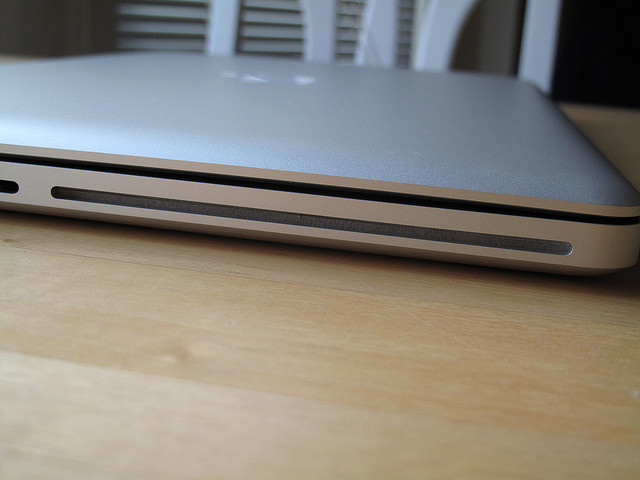Memo to music software developers, artists and labels distributing music, and anyone else who uses optical drives: stop assuming they’ll always be there, because they won’t. Talking points:
- Netbooks and tablets already lack optical drives. With more mobile devices, they’re unlikely to be alone.
- Next up: laptops. Many laptops over the years have put optical drives in removable drive bays or shipped as external options to shed weight and bulk. HP Envy models recently came with external drives. And now, it’s a sure bet that Apple will drop optical drives on at least some MacBook Pros, as it did on the Air.
- If you’re selling paid software, customers do sometimes lose your discs (or they’re on the road without access to them.)
- If you’re sending music promos, the accessibility and manageability of digital may be essential. And you don’t want someone to fail to listen to a record just because they didn’t plug in their MacBook optical dongle.
- At gigs (see lament below) be ready with some … I don’t know, QRCodes? (QRCodes on t-shirts!) Anıl Çamcı has a nice idea – print QRCodes on the physical CD, get the best of both worlds. (Suppose that works for vinyl, too; your laptop doesn’t have an LP slot.)
- Yes, I also hope USB stick prices plummet. Until then…
I really love CDs and my occasional Netflix DVD and other optical distribution. But the writing’s on the wall here.
I don’t think that this will force Mac developers into Apple’s Store. Many pro software developers are unlikely to want to play along with all of Apple’s approval rules; some already have digital distribution. (It ain’t rocket science.) There are reasons they might consider that store, and this decision could help give Apple some momentum, but unlike on iOS, distribution through such a store is non-exclusive and likely to remain that way. That means that the presence of a particular drive does little to change the existing pros and cons of this and other stores. If you liked them before, you like them now; if not, you still don’t.
There’s a technology for loading content, code and music, tools and visuals onto a computer without shiny, plastic discs. It’s not called the Apple App Store. It’s called “The Internet.”
Nor do I think this means any major change – negative or positive – in regards to DRM.
In fact, expect an uptick in the use of USB sticks and other larger storage. That already had begun with massive sample libraries that number the hundreds of gigs. It’s a no-brainer for other large content, too. That’ll just have to square with another trend, however – solid state drives pulling average internal storage size lower and costs higher, at least in the immediate term.
One very big negative: physical handouts at shows. CDs are still far cheaper to reproduce (by an order of magnitude) than are USB sticks. Then again, maybe music lovers will keep that (now external) drive handy.
As a user, it’s worth not reading too much into this. My hope is that the internal drive bays remain, but are simply either available for upgrade or have a different drive in them. That means additional storage and customization configurations, one likely being optical drives if you want them. External drive options will also most certainly be available. And I hardly expect this to happen across the board all at once – particularly on the PC side, where there’s more model diversity.
Keeping optical drives around will remain a fantastic way to watch videos – particularly on the superior Blu-Ray format – and CDs aren’t going anywhere in a hurry.
Having online access to software you’ve purchased, though, is a no-brainer, and by no means requires an Apple-specific (or any other) store.
